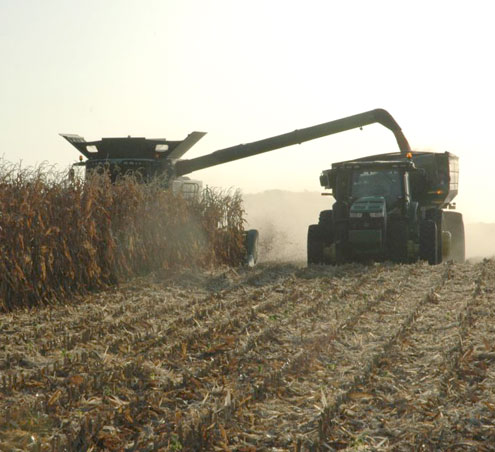[ad_1]
High corn prices are causing a ripple effect throughout the U.S. economy, and the 2021 growing season could be the difference between price stabilization or all-time record high prices, according to Texas A&M AgriLife Extension Service experts.
David Anderson, Ph.D., AgriLife Extension economist, Bryan-College Station, said higher corn prices and their effect on other crops like wheat and soybeans, as well as their subsequent impacts on everything from bread and pasta to fuel and industry or feed and meats, is showing how interrelated agriculture is to the U.S. economy.
Most gasoline is also a 10% mix of ethanol, which also puts demand on corn supplies, especially as the economy continues to gain steam and people are returning to normalized travel patterns, Anderson said. The price for food-grade corn is also tied to the price of corn destined for feed and fuel.
The ripples eventually will hit consumers, Anderson said.
The key for folks to understand is that corn prices roll through everything else, he said. High grain prices mean meat will eventually cost more because input costs are up. And corn overlaps with other important crops like wheat and soybeans because prices influence what is planted on the available crop acres.

Corn prices rise on tightening supplies
Average Texas cash corn prices hit $8 per bushel the first week of May, up from just under $6 per bushel in early March.
Mark Welch, Ph.D., AgriLife Extension grain economist, Bryan-College Station, said the market is highly speculative at this point due to a range of factors that boil down to tight supplies and high demand currently and uncertainty about domestic and foreign production this growing season.
A March U.S. Department of Agriculture survey report indicated U.S. producers were expected to plant 91.1 million acres of corn, which is up just 1% compared to last year. If those numbers remain the same and U.S. producers experience average to below-average yields, Welch said supplies will remain tight.
But Welch and Anderson expect growers to react to what the market is signaling and plant more corn acres than the March report indicated.
Thats the question. The market is saying there is time to plant more corn for the December harvest-time contract, but will they increase corn acres, Welch said. Corn is more favorable for a net return, at least on paper, and that happened in April after the acres report came out.
Welch said other factors support the idea that higher corn prices are likely to incentivize growers to plant more corn acres. U.S. corn acres were planted sooner than usual, and that trend typically means the final tally will be higher than the March report. Supplies are tight amid a potentially tightening market as South America, namely Brazil, and U.S. Corn Belt states like Iowa are experiencing drought, which could impact yields, all while high prices have not deterred Chinese demand for feed grains.
U.S. corn supplies are the lowest theyve been since 2013, but still not as low as they were coming out of the 2012 drought, Welch said.
Its a tight supply situation right now, he said. Now, if we see more acres planted, the weather improves in South America and corn-producing states domestically, producing a good crop, then we could see things settle down. But if corn stocks get lower, there are problems with corn crops and things get tighter, then we could see all-time record corn prices.
[ad_2]

